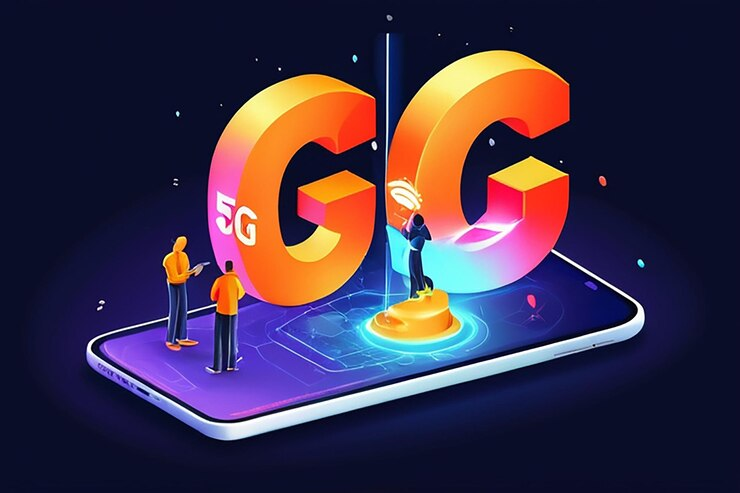The race for faster, more reliable, and more innovative mobile networks has never been more intense. With 5G technology still rolling out worldwide, discussions have already shifted toward the next frontier: 6G.
Understanding the differences between 5G and 6G, and what the future holds for mobile networks, is important as connectivity becomes more integral to everyday life, industries, and global economies.

What is 5G?
5G, the fifth generation of mobile networks, is designed to deliver higher speeds, lower latency, and greater connectivity than its predecessor, 4G LTE. It has download speeds of up to 10 Gbps, latency as low as 1 millisecond, and the ability to connect millions of devices per square kilometer.
5G’s primary advantages include:
- Enhanced Mobile Broadband (eMBB): Faster data transfer speeds for streaming, gaming, and augmented/virtual reality experiences.
- Massive Machine-Type Communication (mMTC): Supporting billions of IoT (Internet of Things) devices, from smart homes to industrial automation.
Ultra-Reliable Low Latency - Communication (URLLC): Enabling real-time applications such as autonomous vehicles, remote surgery, and high-frequency financial trading.
While 5G is transformative, it still has limitations in terms of coverage and the ability to handle some of the futuristic demands that will arise in the coming decades.
The Path to 6G: What is it?
6G, the sixth generation of mobile networks, is expected to build on the foundation of 5G while introducing unprecedented capabilities. Although still in research and development, 6G is expected to launch commercially around 2030. The anticipated features of 6G include:
1.Terahertz Spectrum Usage: Unlike 5G, which primarily operates in millimeter-wave frequencies (up to 100 GHz), 6G is expected to operate in the terahertz (THz) range (300 GHz to 3 THz). This will significantly increase bandwidth and data transmission rates, potentially delivering speeds up to 100 times faster than 5G.
2. Extreme Connectivity: 6G will aim to connect not just billions, but trillions of devices. It will enable true massive IoT (mIoT), with the ability to connect a vast array of devices in smart cities, homes, and industries. This will support everything from advanced automation to real-time health monitoring.
3. AI-Native Networks: Artificial intelligence (AI) will be deeply integrated into the fabric of 6G networks, allowing for more efficient network management, real-time optimization, and autonomous decision-making. AI-driven networks will also support smarter resource allocation and security enhancements, reducing energy consumption and improving user experiences.
4. Sub-Millisecond Latency: 6G is expected to reduce latency to less than 1 millisecond consistently, a significant improvement over 5G’s already impressive latency. This ultra-low latency will enable hyper-realistic virtual reality, real-time haptic feedback, and more accurate autonomous systems.
5. Holographic Communication and XR (Extended Reality): One of the most futuristic promises of 6G is the possibility of holographic communication. With ultra-fast speeds and low latency, 6G networks will allow users to communicate via 3D holograms in real-time. Additionally, 6G will enhance XR technologies, enabling seamless integration of augmented, virtual, and mixed reality into daily life, from education to entertainment and work.
Key Differences Between 5G and 6G

6G Use Cases: Beyond 5G
While 5G is already enabling new technologies such as autonomous vehicles, smart cities, and augmented reality, 6G will push the boundaries further. Some of the envisioned applications for 6G include:
- Haptic Internet: The ability to transmit tactile sensations in real-time, enabling touch-based interactions across the internet. This will revolutionize remote surgeries, gaming, and immersive virtual experiences.
- Telepresence and Holography: With 6G, holographic communication could become commonplace, allowing users to project 3D avatars of themselves in meetings or social gatherings.
- Digital Twins: 6G will enable the creation of highly accurate, real-time digital twins—virtual representations of physical objects, systems, or processes. This will have enormous implications for industries like manufacturing, healthcare, and city planning.
- Space-Based Connectivity: 6G may extend beyond terrestrial networks, integrating satellite systems for seamless global coverage, including in remote areas where current cellular networks cannot reach.
Challenges for 6G Development
The development of 6G won’t be without its hurdles. Some key challenges include:
1. Spectrum Availability: Operating in the terahertz spectrum will require careful management of spectrum resources and overcoming significant regulatory challenges.
2. Energy Consumption: Despite 6G’s promise of efficiency, the sheer number of devices and the infrastructure required for terahertz communication could lead to higher energy demands unless innovative power-saving technologies are developed.
3. Technological Complexity: The infrastructure needed for 6G, including terahertz antennas and AI-powered networks, will be far more complex than current 5G systems, leading to higher costs and longer deployment times.
4. Security and Privacy: With the integration of AI and trillions of connected devices, 6G networks will present new security vulnerabilities. Ensuring robust security protocols and data privacy will be essential.
Conclusion
5G is still in its early days, yet it has already begun reshaping industries, enhancing mobile experiences, and laying the groundwork for a more connected world. However, as we look ahead to 6G, we see a future that promises even greater innovation.
From terahertz frequencies and AI-driven networks to holographic communication and extended reality, 6G represents the next major leap in mobile technology.
Though we are still several years away from realizing 6G’s potential, it is clear that the evolution of mobile networks will continue to drive transformative changes across industries and society at large.
As 5G continues to expand and mature, the journey toward 6G will undoubtedly shape the future of connectivity in ways we can only begin to imagine.












